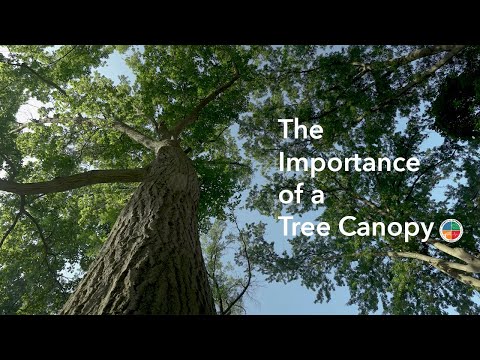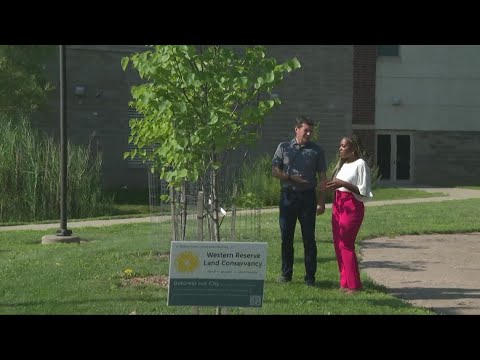The Cleveland tree canopy — the area shaded by the branches and leaves of trees — is less than half the size it was in the middle of the 20th century.
Rich Cochrane, president and CEO of the Western Reserve Land Conservancy, has been sounding the alarm about this for years, making the case that trees are not luxuries but necessities.
In a 2015 TED Talk, he said research has shown over and over that, in cities around the world, people thrive where trees are plentiful and suffer where they are scarce.
“The common denominator of success happens to be a healthy tree canopy, and the common denominator of distress happens to be the lack of trees,” he said. “It’s remarkably consistent all over the world.”
Here are a few of the benefits of a healthy Cleveland tree canopy.
Greenery improves mental health
In the early 2010s, researchers in Philadelphia spent three years conducting a clever experiment to test the effects of the physical environment on people’s mental health. They interviewed people living near some of the city’s many abandoned lots about how often they experienced feelings such as nervousness, restlessness and depression.
Next, the researchers collaborated with the Pennsylvania Horticultural Society on cleaning, beautifying and maintaining some of the lots. They then followed up with the interview subjects.
“We found a significant reduction in the amount of people who were feeling depressed” around the lots that had been beautified, one of the researchers told NPR.
The resulting study, published in the Journal of the American Medical Association, concluded, “The treatment of blighted physical environments, particularly in resource-limited urban settings, can be an important treatment for mental health problems alongside other patient-level treatments.”
Trees build community and deter crime
Ming Kuo, an associate professor at the University of Illinois, studies how environments affect people. In an interview with the podcast Hidden Brain, she described research based on interviews with people living in high rises with varying levels of greenery around them. She found more “social breakdown” in buildings that lacked trees and grass outside. Fewer people there knew their neighbors, and more reported seeing aggressive behaviors.
Police reports supported these observations. And separate studies in Baltimore, Philadelphia and Portland, Oregon, have also shown strong associations between levels of greenery, community cohesion and crime.
“We are overlooking a crucial ingredient in the urban fabric, which is nature and elements of nature,” Kuo explained. “So parks and greenery turn out to be not just something that brightens our lives but turns out to be really functional. It helps us be our better selves.”
Trees reduce heat inequity
The National Weather Service is predicting higher-than-normal temperatures almost everywhere in the country this summer. In Cuyahoga County, and all metro regions, the heat will not be felt evenly.
The “Urban Heat Island” effect refers to cities generally being hotter than suburban and rural areas. There are several reasons for this, starting with the vast amounts of asphalt and concrete in cities. But a lack of trees is also a factor. Even within a city, the temperature can vary 10 to 15 degrees, and numerous urban heat mapping studies have shown that “the hottest places in metropolitan areas are often in poor, minority neighborhoods with few trees.”
Trees are strongly correlated to economic vitality
In his TED Talk, Cochrane showed how a map of the tree canopy across Cuyahoga County closely matched maps showing rates of childhood poverty and lead poisoning. The fewer trees, the greater the challenges facing the people living there.
“Our region focuses too often on effects and ignores the causes. The environment is the cause,” he said. “You and I are shaped by where we live, and we owe it to ourselves and we owe it to our children to address the cause and not the effect.”
You can help speak for the trees by adopting one or by attending one of Western Reserve Land Conservancy’s upcoming tree-planting events, on May 4 and May 11, in St. Clair Superior.





